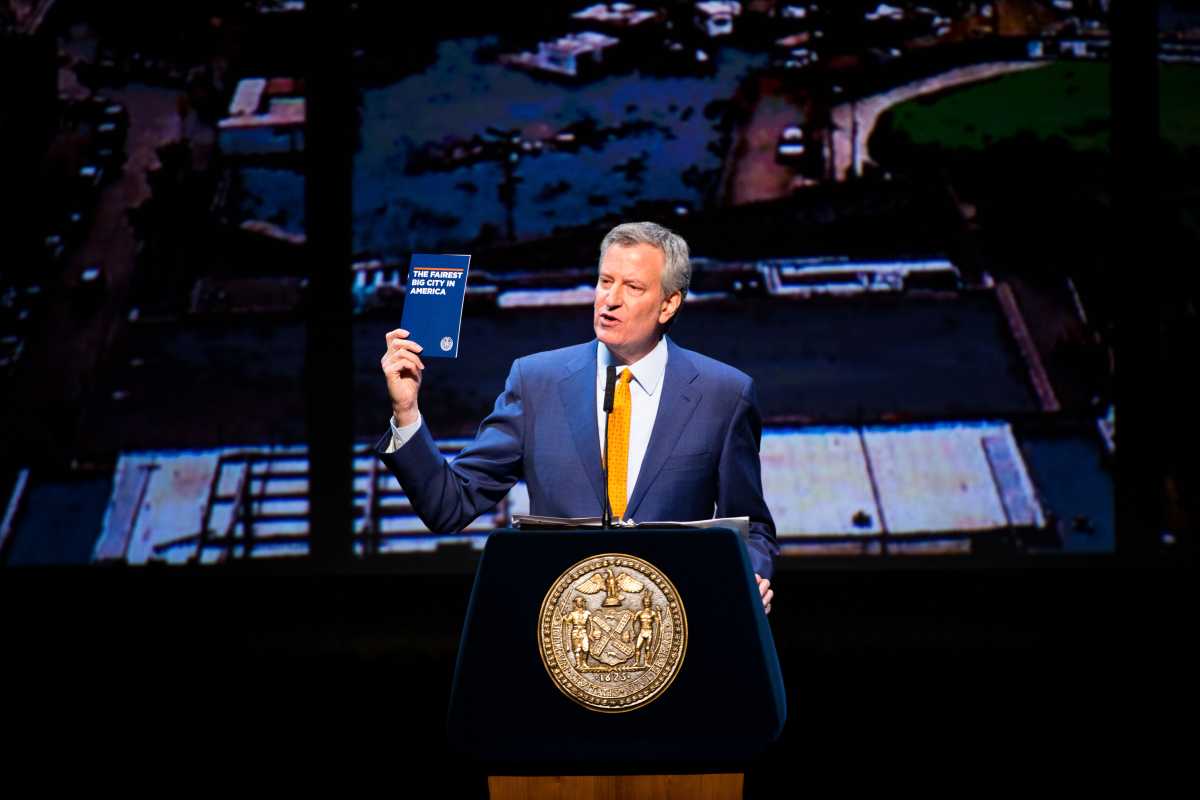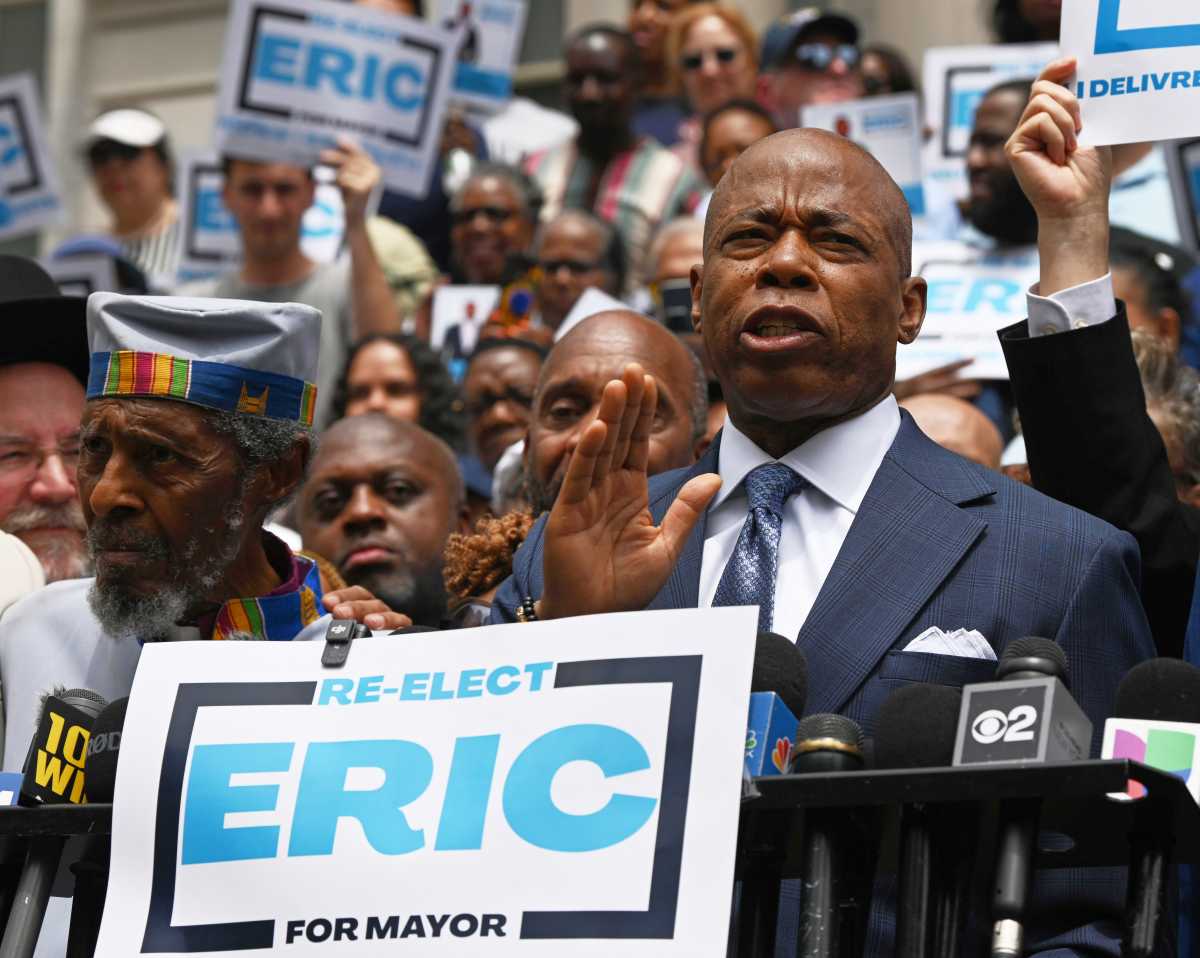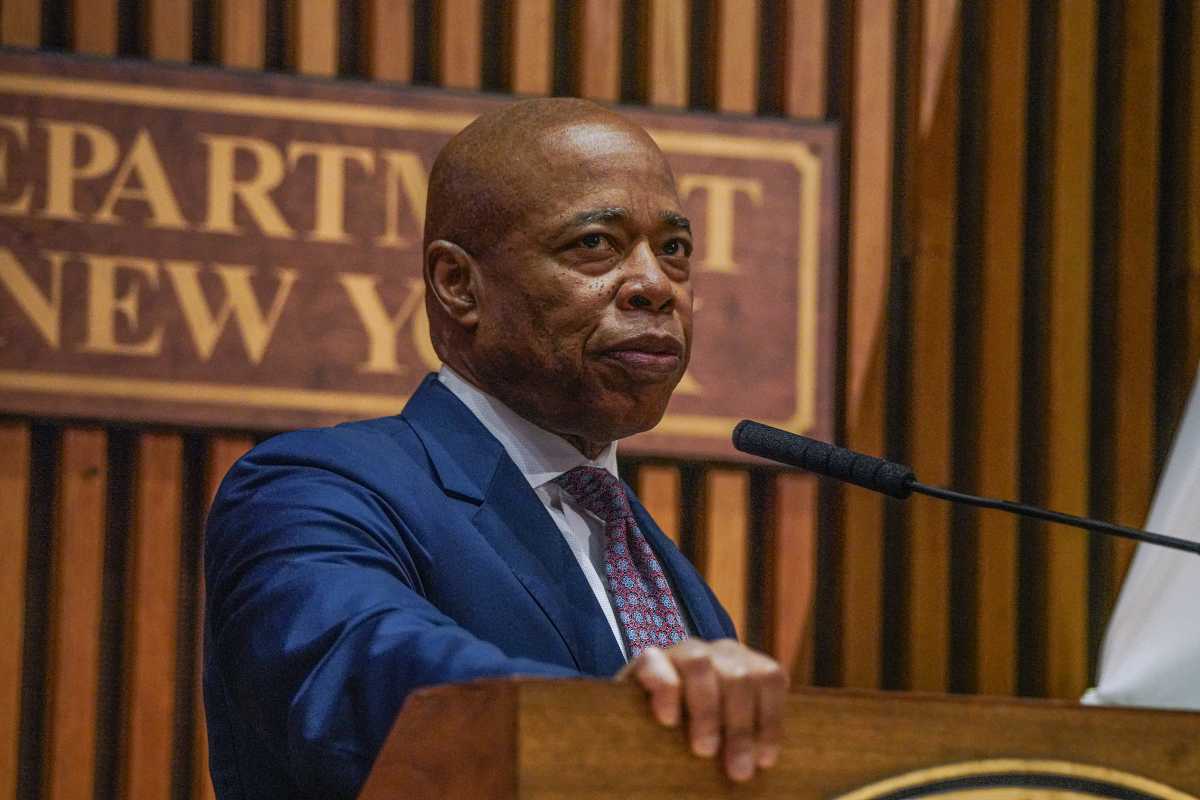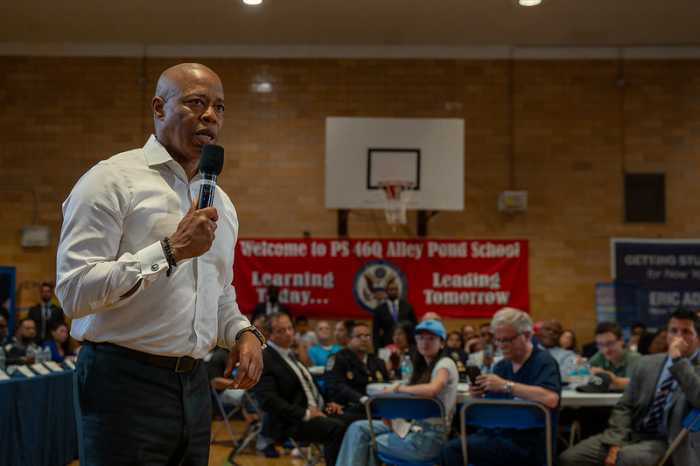BY EMILIE RUSCOE
Mayor Bill de Blasio outlined not one, but two broad policy blueprints at the State of the City address on Feb. 13 in Brooklyn.
The first is a 12-point plan to make New York “the fairest big city in the world,” which builds on the successes of his first term in office and renews his commitment to many of his signature issues. The second is a 10-point plan to fortify civic engagement in New York.
Both position the city — and the mayor — as nationally influential and both help define de Blasio’s positions on issues that are highly visible on the national stage.
“Three years, 10 months and 15 days: That’s how long this administration has to ensure we become the fairest big city in America,” de Blasio told the crowd gathered inside the Kings Theater on Flatbush Avenue in Brooklyn. “We will take on that mission and we will do it with speed and urgency.”
The most well-defined initiatives under the “fairest city” umbrella included the promises that every NYPD office will wear a body camera by the end of the 2018; that a “3-K for All” nursery school program will be citywide by 2021; and that the administration will work to help create 100,000 jobs that pay $50,000 or more for New York residents.
He also listed steps the city has taken to expand its affordable housing initiative and to combat the effects of climate change and the opioid epidemic. De Blasio also touted ThriveNYC, the mental health initiative spearheaded by first lady Chirlane McCray.
Some of de Blasio’s “fairest city” talking points lacked specificity, such as a plan for improvements at rundown New York City Housing Authority (NYCHA) facilities in the wake of revelations that more than 80 percent of the city’s 400,000 official NYCHA residents have been without heat or hot water at times this winter.
Other proposed initiatives seemed to provide little toward advancing the administration’s strategy for addressing key issues, such as de Blasio’s insistence on returning to Albany with his oft-thwarted plan to finance work on the subway with a millionaire’s tax.
Both the “fairest city” agenda and a civic engagement initiative, called Democracy NYC, build off of grassroots political momentum resulting from the 2016 election. Throughout the address, de Blasio emphasized New York’s role as a national leader.
Early in his speech, de Blasio proudly made the point that despite a Halloween terrorist attack, New Yorkers came out in force for that evening’s annual parade in Greenwich Village.
This, said de Blasio, demonstrates something essential about the character of the city: “We will not be intimidated, and we will not change.”




































